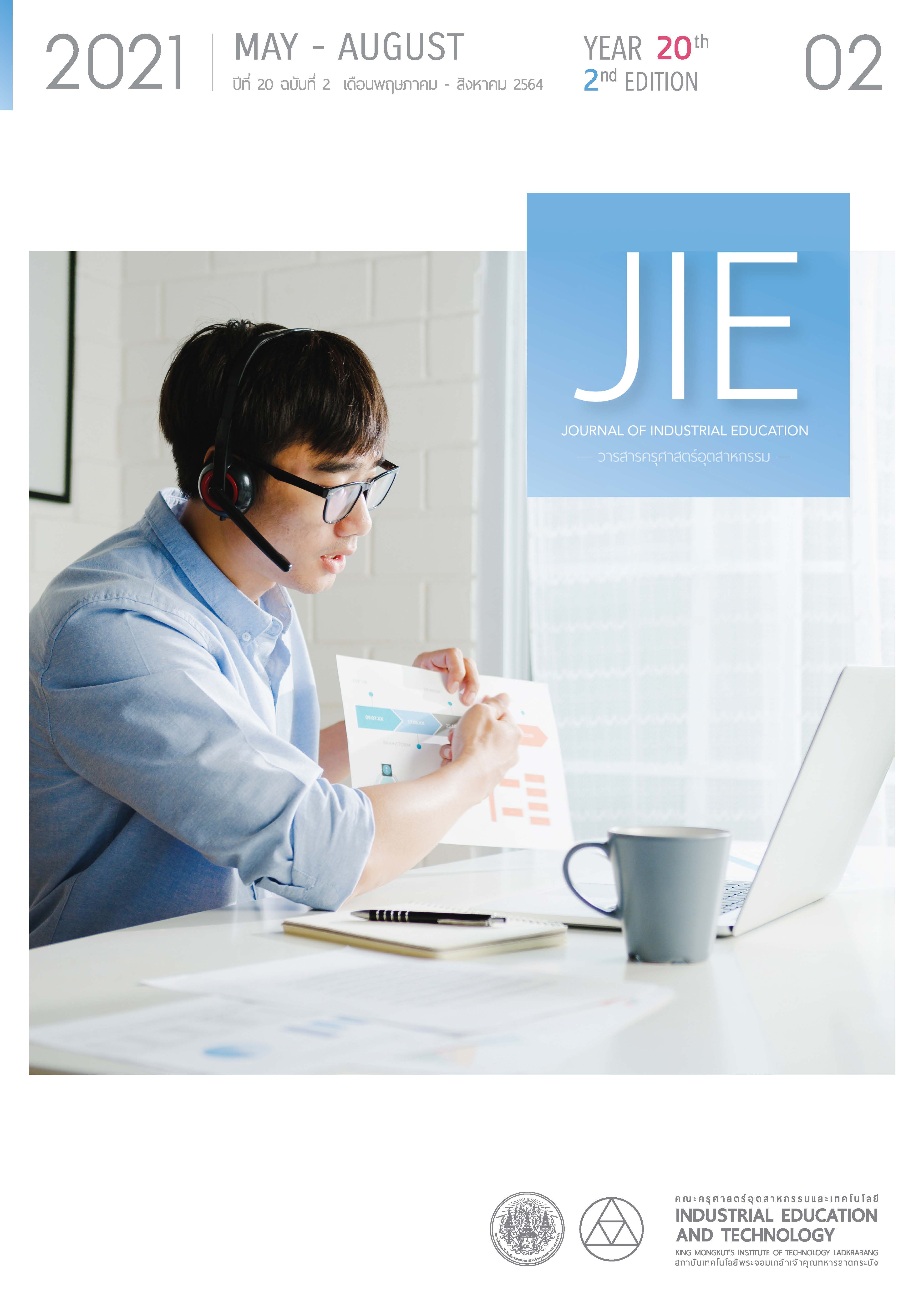LEARNING ACTIVITIES BASED ON SOCIAL CONSTRUCTIVISM AND USING GOOGLE SKETCHUP TO ENHANCE MATHEMATICAL VISUALIZATION ABILITIES ON GEOMETRY FOR GRADE 6 STUDENTS
Keywords:
Social Constructivism, Google Sketchup, Mathematical visualization ability, GeometryAbstract
The purpose of this research was to study the visualization ability on geometry for grade 6 students after learning through activities based on Social constructivism combine with Google SketchUp on geometry. The participants of this research were 26 students at a medium sized schools in Uttaradit Province. This study conducted in the second semester of the academic year 2020. The research instruments were four lesson plans, worksheets, and mathematical visualization ability test. Data were analyzed by content analysis in four levels which were level 1, level 2, level 3, and level 4.
The results showed that most of students were in level 4 for 95 percent, meaning that students can think and analyze the various geometric figures in their thoughts or can imagine when they changed the positions or different views. Moreover, they can draw the contour or the base and the forward face of the three-dimensional geometric figure and entirely identify the three-dimensional geometry
References
Ministry of Education. (2017). Mathematics department (A.D. 2008) basic education core curriculum B.E. 2551. Bangkok: Kurusapa Ladprao. 2.
The institute for the Promotion of Teaching Science and Technology (IPST). (2020). IPST Magazine. [online]. Available: https://emagazine.ipst.ac.th/224/26 Retrieved July 11, 2020.
Sommer, R. (1978). The mind’s eye: Imagery in everyday life. USA: Delacorte Press. 93.
MaKhanong, A. (2011). Mathematics for high school teachers. Bangkok: Chulalongkorn University Press. 68-69.
Hershkowitz, R. (1989). “Visualization in geometry--Two sides of the coin.” Focus on Learning Problems in Mathematics. 11(1-2), 61-76.
Punnakosol, S. (2016). Teacher TV. [online]. Available: http://www.thaiteachers.tv Retrieved July 20, 2020.
Kitkuekool, S. (2009). “Constructivism to socioculturalism.” Journal of Education Naresuan University. 11(1), 117-122. (in Thai)
Chaicharoen, S. (2014). Constructivism. Khon Kaen: Educational Technology Faculty of Education Khonkaen University. 7. (in Thai)
Jaichadee, S. (2008). “Construction of learning objects in mathematics on geometric transformations for Mathayom Suksa 2 students.” Master’s thesis, Chiang Mai University, 98-99. (in Thai)
Supervisory Unit Office of Vocational Education Commission. (2012). What is Google Sketchup. [online]. Available: https://sites.google.com/site/kruneungonline/sara-thi-1-thakhwam-rucak-google-sketchup Retrieved July 20, 2020.
Mathmool, K. (2015). “Promoting visualization abilities in mathematics of Mathayom Suksa 1 students by using the Google SketchUp program.” Master’s thesis, Chiang Mai University, 23-26. (in Thai)
Prakotmak, S. (2019). “The development of integrated model based on social constructivist theory to enhance English reading comprehension ability of Mattayomsuksa 2 students.” Journal of Educational Technology and Communications Mahasarakham University. 2(6), 72-84. (in Thai)
Stigler, J. W., Gallimore, R., & Hiebert, J. (2002). “A knowledge base for the teaching profession: what would it look like and how can we get one?” Educational Researcher. 31(5), 3-15.
Panorkou, N., & Pratt, D. (2011). “Using Google SketchUp to research children’s experience of dimension.” 35th Conference of the international Group for the Psychology of Mathematics Education. 35(3), 337-344.
Boonprajak, S. (2007). Principles of teaching mathematics. Bangkok: Faculty of Science and Technology, Phranakhon Rajabhat University. 10-11. (in Thai)
Kurtulus, A., & Uygan, C. (2016). “The effects of Google SketchUp based geometry activities and projects on spatial visualization ability of student mathematics teachers.” Turkish Journal of Computer and Mathematics Education. 7(3), 510-535.
Downloads
Published
How to Cite
Issue
Section
License
"The opinions and contents including the words in papers are responsibility by the authors."
"ข้อคิดเห็น เนื้อหา รวมทั้งการใช้ภาษาในบทความถือเป็นความรับผิดชอบของผู้เขียน"



